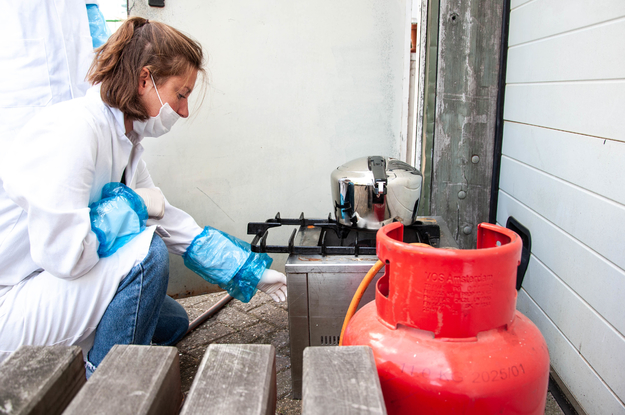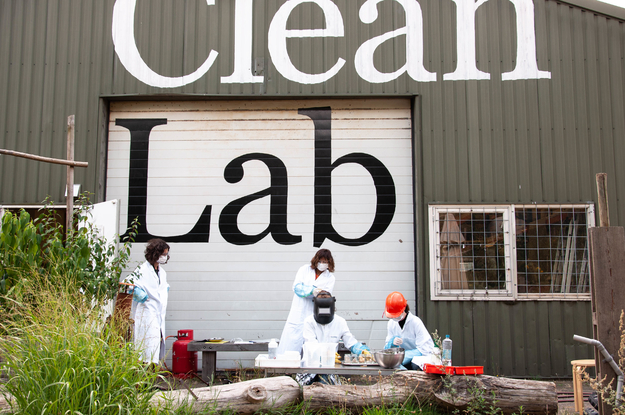What happens to our bodies after death?
When choosing Resomation as a burial method, the answer is just as fascinating as it might give you the shivers: In this process, the human body is dissolved in lye, a highly alkaline fluid. Only bones will remain after being pressure-cooked for a couple of hours, while every other body tissue will have liquified.
Resomation is a low-energy, space-saving and environmentally friendly way to return the compounds of the human body into the earth's material cycles. The resulting effluent is loaded with nutrients that make it a powerful fertilizer, and the Carbon footprint is significantly smaller than, e.g. in Cremation.
However, one catch remains: Fibrous plant-based fabrics – including common clothing materials like cotton – do not dissolve completely in the Resomation process. Hence, animal-based fabrics like silk and wool usually are employed for clothing the Deceased for their resomation burial.
To find a viable non-animal alternative, Mediamatic's Clean Lab team set out to research which fabrics could be used as a shroud in resomation burials. Being fungi-lovers, testing mushroom-based tissue for its potential was a must. And the results are surprising!
First, various samples were assembled: Besides four types of mushrooms (Rhizopus oligosporus, Lentinula edodes, Pleurotus ostreatus and Pleurotus eryngii), a chicken thigh went into one of the jars as well to verify the proper setup of the trial.
Then, the Potassium-Hydroxide was measured and mixed with demineralized water, resulting in a highly alkaline lye with a pH of 13,95.


The jars holding the samples were filled with lye and closed off with heat-resistant plastic and a cotton rope.

Closing the sample jars with cotton rope - Part of the experiment "The resomation of fungal tissue"

The samples then were placed into a stainless-steel pressure cooker and cooked at high pressure for 1,5 hours.


After cooling down, the test jars were collected from the cooker.
Collecting the resomated samples from pressure cooker -

Our control sample – the chicken thigh – almost wholly dissolved in the lye, leaving only small pieces of brittle bone.

In contrast to animal tissue, the mushroom samples remained surprisingly intact.

Here is what the Shiitake (Lentinula edodes) fruiting body looked like after being pressure-cooked in strong lye: unimpressed!

A piece of King Oyster mushroom (Pleurotus eryngii) also survived, almost undestroyed.

Similarly, the mycelium of Grey Oyster (Pleurotus ostreatus) grown on wheat spelt endured the unfavourable conditions of the test.

Last but not least, even the two Tempeh samples came out of the lye cooker a little tanned but otherwise highly intact.

The liquids were still highly alkaline. However, after adding sufficient water for dilution, they are non-hazardous and can safely be discarded via the sewage system.

The Clean Lab Team, Magdalena, Nadja and Elna, is happy about gaining knowledge from the experiment. And they are amazed by the superhuman strength of mushroom and mycelium. They turned into even bigger fans of fungi.



